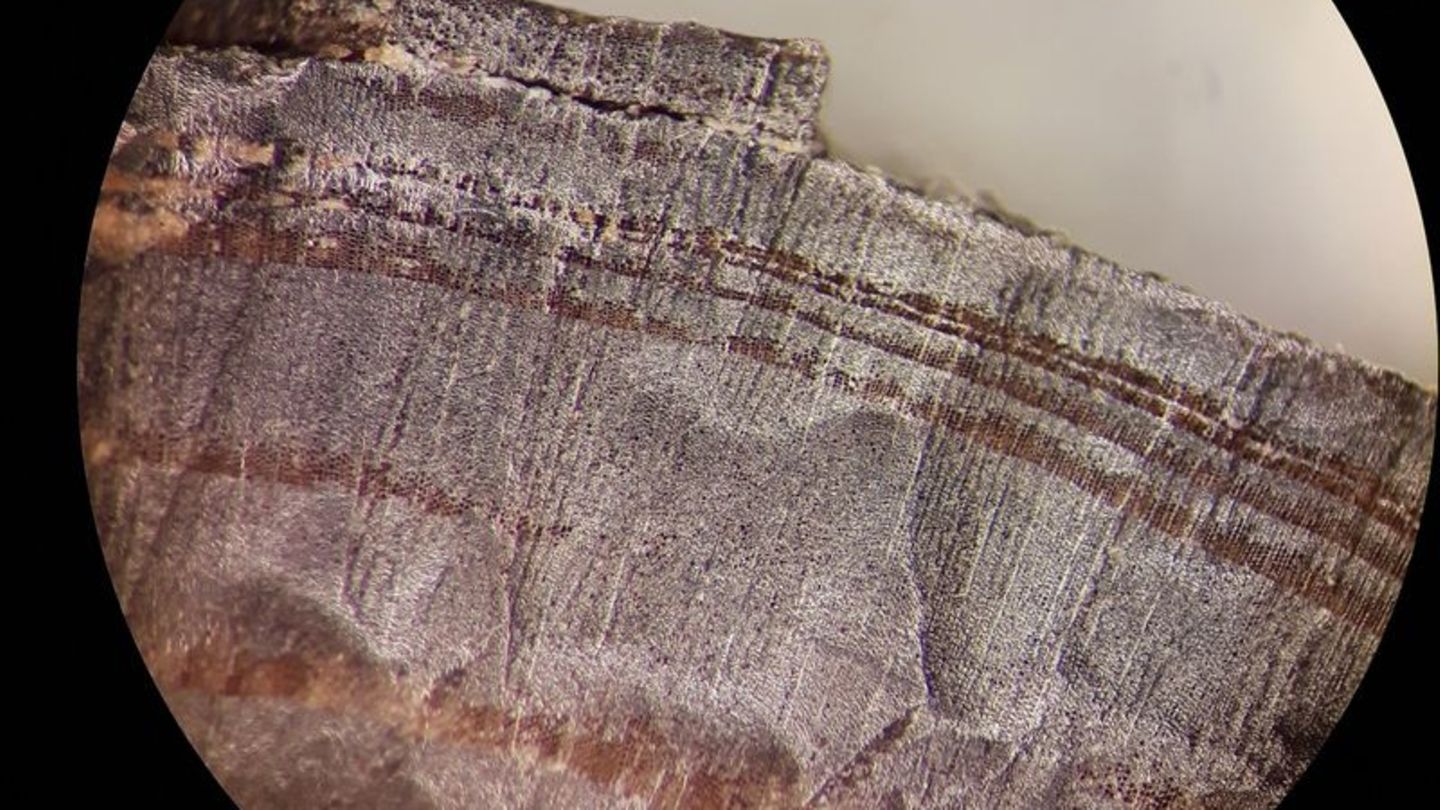Science
Wooden and solar storm provide evidence of Vikings in America
Micrograph of a Nordic timber log at L’Anse aux Meadows. Exactly a thousand years ago, in 1021, Vikings could have lived in North America. Photo: Petra Doeve/Springer Nature/dpa
© dpa-infocom GmbH
A team of researchers was able to determine exactly what year the Vikings lived in America. A solar storm over a thousand years ago helped scientists.
Exactly a thousand years ago, in 1021, Vikings could have lived in North America. That’s at least suggested by an analysis of woody remains presented by a research team in the journal Nature.
Thus these discoveries are the oldest accurately dated evidence that people from Europe came to America across the Atlantic. A violent solar storm helped the team determine the age of the logs.
Long before Columbus
It was known for some time that Columbus was not the first European to reach the American continent. Last but not least, the Sagas, the old Norse stories from the Middle Ages, describe in relative detail how the Vikings sailed across the Atlantic with their famous tall ships hundreds of years ago. But these stories, initially transmitted orally, have long been dismissed as legends and fairy tales – also because they contain many paradoxical and fantastic elements. The Epics were not historical sources until after the discovery in 1961 of the archaeological site of L’Anse aux Meadows on the northern tip of the Canadian island of Newfoundland. The exact age of the settlement has not yet been established, nor the exact time of the arrival of the Vikings on the continent.
Three discreet pieces of wood just found at L’Anse aux Meadows now seem to allow a more accurate dating. The remains, which come from different trees, were closely examined by a team led by geoscientists Michael D and Margot Koetms of the University of Groningen. Scientists are sure that wooden artifacts could be assigned to sailors in Northern Europe – not only because of their location, but also because they clearly showed signs of processing from blades made of metal, a material that the locals did not make at the time.
Cosmic event helps the research team
To clarify the question of when the artifact wood was obtained, scientists have now helped with radiocarbon dating, which was conducted at both the University of Groningen and the Kurt Engelhorn Center in Mannheim, as well as a cosmic event: in AD 992 a huge solar storm occurred that produced a radio carbon signal visible in the tree rings in the following years.
“The apparent increase in radiocarbon production between AD 992 and 993 was observed in tree ring archives around the world,” Research Director Dee explains in a press release. This signal was displayed in each of the three woody objects examined in 29 growth rings in front of the phloem edge. “The fact that we found the solar storm signal 29 growth rings in front of the phloem allows us to conclude that the cutting activity occurred in AD 1021,” summarizes lead author Kuitems.
Their analysis thus sets a new benchmark for the arrival of Europeans on the American continent, according to the authors. In addition, it emphasizes the potential value of cosmic radiation events – such as the powerful solar storm here – as reference points for the future dating of artifacts and environmental events.
How long did the Vikings stay in America?
It remains unclear how many expeditions the Vikings made to America and how long they stayed there. Neither of them is yet known about the effects of their stay. Icelandic sagas suggested that the Vikings entered into a cultural exchange with the indigenous peoples of North America, scholars wrote: “If these encounters did indeed occur, they could have had unintended consequences, such as transmission of pathogens, introduction of aliens to animal and plant species, or even the exchange of human genetic information” .
However, recent data from North Greenlanders have shown no evidence of the latter. The authors conclude: “How the year 1021 CE relates to the transatlantic activities of the Vikings as a whole is the subject of future research. However, our results provide a temporal anchor for further investigation of the consequences of their expansion into the Far West.”

“Alcohol buff. Troublemaker. Introvert. Student. Social media lover. Web ninja. Bacon fan. Reader.”






More Stories
“Time seems to cure long Covid.”
Science: The use of artificial intelligence is changing the way hospitals operate
Simple recipe: sweet cream cheese slices from the tray